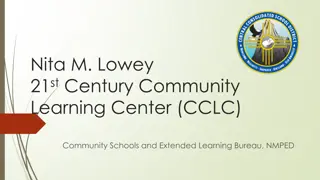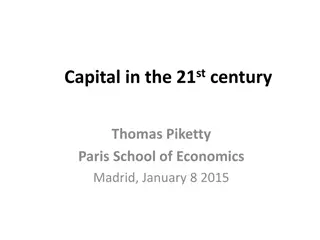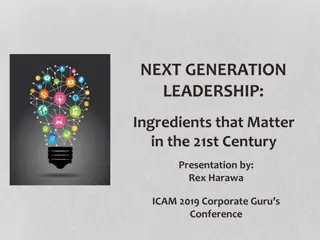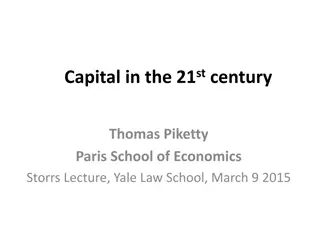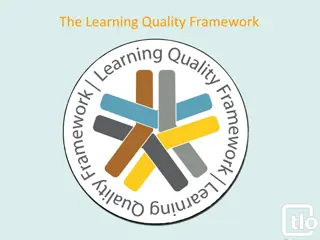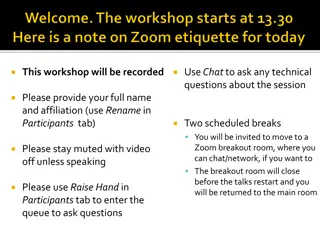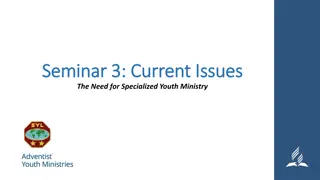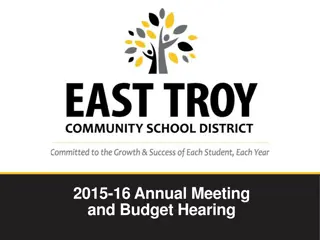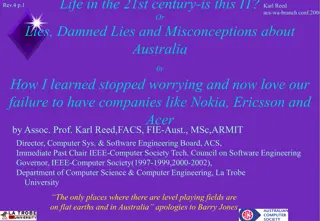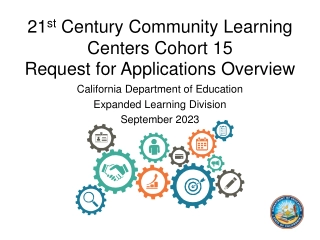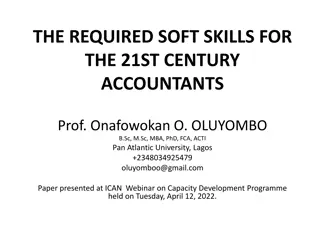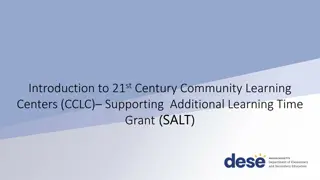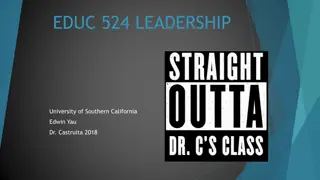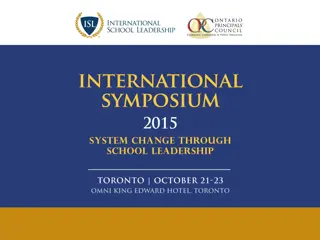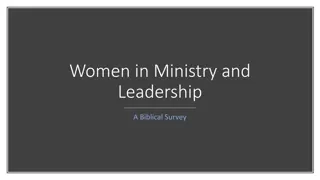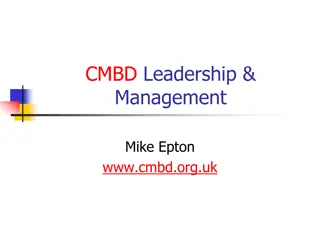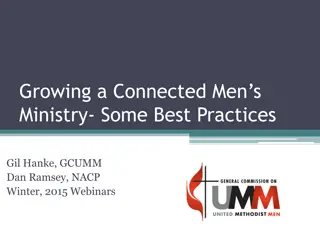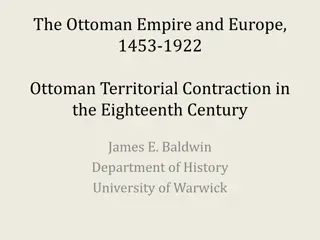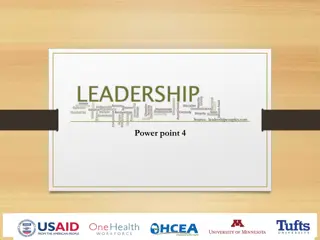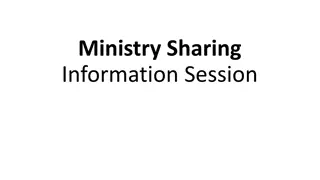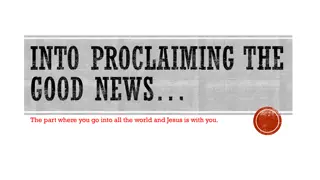Insights on Leadership and Trends in Ministry for the 21st Century
The report provides a detailed analysis of ministry trends, leadership roles, and factors impacting congregational vitality in the 21st century. It includes data on authorized ministry roles, noteworthy trends towards the future, and the correlation between specific marks and congregational vitality indicators within the ministry context.
Download Presentation

Please find below an Image/Link to download the presentation.
The content on the website is provided AS IS for your information and personal use only. It may not be sold, licensed, or shared on other websites without obtaining consent from the author. Download presentation by click this link. If you encounter any issues during the download, it is possible that the publisher has removed the file from their server.
E N D
Presentation Transcript
Authorizing Ministry for the 21stCentury Thursday, December 1, 2016 Rev. Kristina Lizardy-Hajbi, Ph.D. Center for Analytics, Research and Data (CARD)
Authorized Ministry Today Authorization Active, Non-Retired Retired TOTAL Ordained 6,022 3,950 9,972 Licensed 664 13 677 Dual 316 -- 316 Ordained Ministerial Partner Standing 138 -- 138 Commissioned 126 24 150 TOTAL 7,266 3,987 11,253 Out of 746 Members in Discernment, 101 (13.5%) are Licensed.
Noteworthy Trends toward the Future Increased number of: Retiring/retired ministers Female ministers Ministers of color Ministers under 40 Retired ministers serving in ministry settings Chaplaincy positions Decreased number of: Commissioned ministers Local church positions Full-time positions Ordinations
Who Is Leading UCC Congregations? Ordained = 71.3% Licensed = 10.9% Authorized previously or primarily by / in conjunction with another denomination = 13.8% Layperson = 2.8%
Who Is Leading UCC Congregations? In transition (Interim or Designated-Term)= 10.8% If Other Church Position, Pastor Emeritus, Associate/ Assistant, and Supply are included = 14.7%
Ministerial Excellence/Formation Research on the Relationship between Marks and Congregational Vitality Factors Four Marks correlated significantly with the greatest number of congregational vitality indicators: The ability to mutually equip and motivate a community of faith The ability to lead and encourage ministries of evangelism, service, stewardship, and social transformation The ability to read the context of a community s ministry and creatively lead that community through change or conflict The ability to frame and test a vision in community These four marks were the lowest-rated by congregants. Ministry-related knowledge and skills (preaching, Biblical interpretation, pastoral care, leading worship) were most valued by congregants but demonstrated a much weaker relationship with congregational vitality.
Current and Future Research Trends Specialized Ministries Search and Call: Demographically, who is getting church positions? What kinds of positions? Gender Race Ability Sexual orientation Flourishing in Ministry Project: Well-being of Clergy in the UCC Partnership with the University of Notre Dame: http://wellbeing.nd.edu/flourishing-in-ministry/


